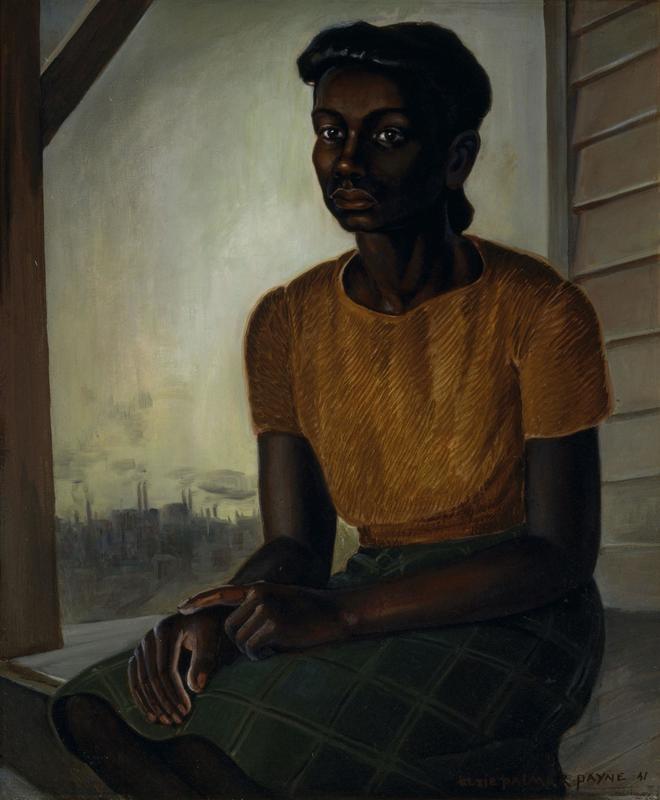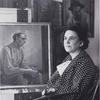More about The Blues in the Night

Contributor
Elsie Palmer Payne's title of this painting, The Blues in the Night, more than likely comes from the 1942 song of the same name.
The song was composed for a movie, also of the same name, and this song helped said movie earn an Oscar nomination for best music. The song itself is about being left by someone that you love, and while the lyrics are gendered from a male perspective, the message of the song is undeniably universal. This being something that is proved by the artist's own life. Elsie was married to Edgar Payne who divorced his wife about halfway through the Great Depression. Blues in the Night was painted sometime after this, and it is believed that the painting is of Elsie’s cleaning lady, who appears in another work of hers called Bus Stop. Her own romantic situation is unknown, but considering the title, it is quite possible she was in a similar situation to Elsie.
Elsie very much went out of her way to try and capture people of color in her work. This was particularly unique as at the time Abstract Expressionism was popular and the style saw attempts to capture such stories as unattractive. Arshile Gorky described such social Realism as “Poor art for poor people.” Unfortunately, this attitude would continue up even into the ’70s. You can see this in the description of Michael Rosenfeld’s “Beyond the Spectrum: Abstraction in African American Art, 1950–1975,” a show that was described as the first generation of African American abstract artists.
Eventually, reception to this kind of work would change for Elsie too, as this subject matter would eventually become one of Elsie’s greatest successes. In 1988, an Orange County Art collector bought this painting and numerous other pieces of her finest work after their assembly in a 1988 retrospective. For this reason, this piece and ones like it have actually spent the last few years out of the public eye. Now however they are making a return to public view. Which I for one consider a great thing, as it would be a shame to lose a work whose history so perfectly captures the universal quality of heartbreak.
Sources
- Seed, John“Delving Into the Story of a Black Woman Waiting for a Bus in Postwar Los Angeles” Hyperallergic 04/12/19 https://hyperallergic.com/494470/elsie-palmer-payne-bus-stop-1949/
- Sheets, Hilarie M. “The Changing Complex Profile of Black Abstract Painters” Artnews 07/04/14 https://www.artnews.com/art-news/news/changing-complex-profile-of-black…
- Web Contributor “Blues in the Night” IMDB viewed on 03/25/2020 https://www.imdb.com/title/tt0033409/awards











